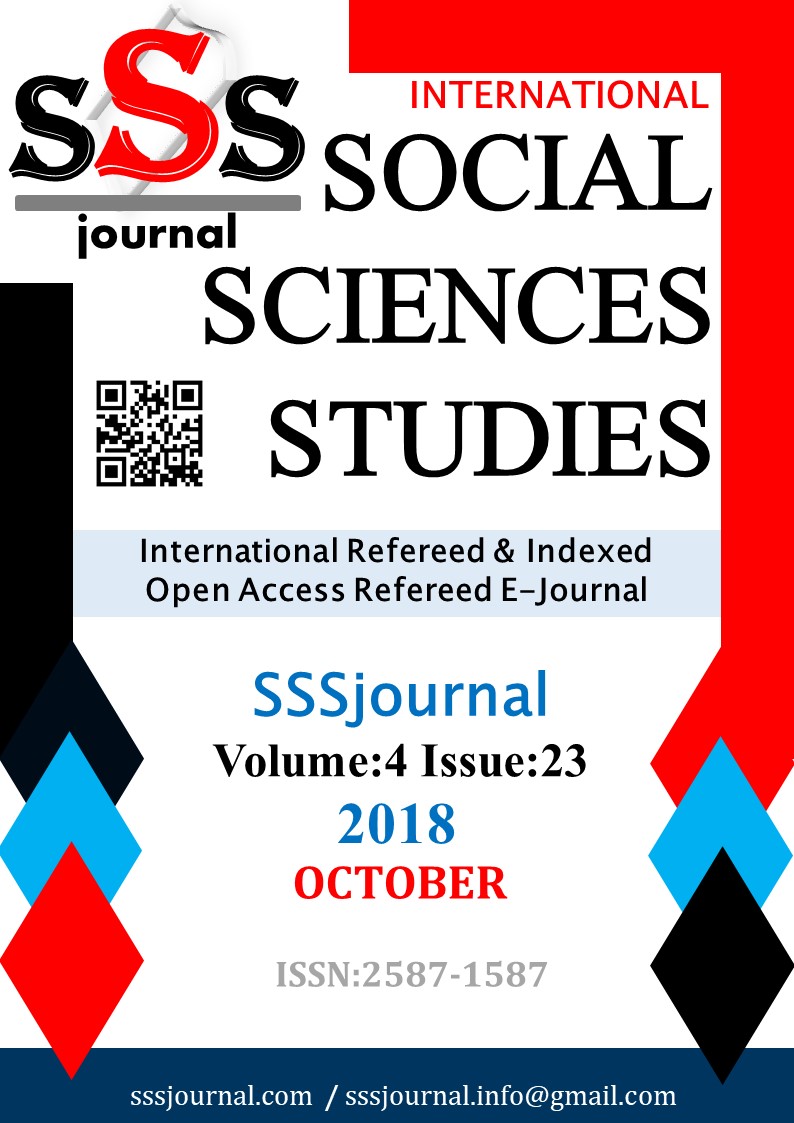Author :
Abstract
Tarih boyunca insanoğlu temel ihtiyaçlarından olan barınma ihtiyacını önce mağaralarda, göçebe hayatta çadırlarda, yerleşik hayata geçildiğinde ise konutlarda karşılamışlardır. Coğrafya ve kültüre dayalı olarak farklılık gösteren konut tipolojileri tarihsel süreç içerisinde geçirdiği değişimle her zaman mimari, sosyoloji, psikoloji ve daha birçok bilim dalının araştırma konusu olmuştur. Tarihsel süreç içerisinde sofasız, dış sofalı, iç sofalı, orta sofalı plan tipi gibi farklı plan tipolojileri ile sınıflandırılan geleneksel Türk evinin bir parçası olarak geleneksel Konya evi de iç sofalı ve hayatlı evler olarak gruplandırılmaktadır. Mekânsal nitelik, ihtiyaçlar ve ilişkiler bağlamında sürekli bir değişimin içinde olan konut mimarisinde geleneksel konut tipolojilerinin incelenmesi, çözümlenmesi ve belgelenmesi literatüre sağlayacağı katkı açısından önem taşımaktadır. Mimaride mekânların birbiriyle olan ilişkilerini ve bir araya geliş şekillerini, mekânsal çözümlemelerini inceleyen mekân morfolojisi üzerine yapılan çalışmalar konut özelinde giderek artmakta ve yeni tekniklerle kendisini geliştirmektedir. Morfolojik analiz yöntemlerinden olan Mekân Dizimi de, toplumlar arasındaki kültürel farklılıklara bağlı olarak ortaya çıkan yaşam şekillerinin mekân kurgusuna etkileri üzerinde tespitlerde bulunmak amacıyla kullanılan bir araştırma yöntemidir. Konya’da geç Osmanlı dönemi geleneksel Konya evlerinin morfolojik analizini yapmayı amaçlayan bu çalışmada, çalışma kapsamında incelenecek evler üzerinde mekan dizim yöntemi ile mekânsal ilişkiler çözümlenecek, konut tipolojileri değerlendirilecektir. Ele aldığı örnekler açısından dönemsel bir tespit çalışması olması araştırmayı değerli kılmaktadır.
Keywords
Abstract
Along historical periods human being fulfilled his need of shelter, as one of basic needs, firstly in caves, later in tent along his nomad life and in houses when he adopted a settled life. House typologies, showing distinctness depending on geography and culture, always happened to be research subject to many disciplines such as architecture, sociology, psychology, etc. via the change they pass through historical process. Traditional Konya house – as a part of the traditional Turkish house classified with different plan typologies such as plan types without sofa, with outer sofa, with inner sofa, with middle sofa – is grouped as houses with inner sofa and houses with hayat. The review, analysis and documentation of traditional house typologies in house architecture which is in a perpetual change in the context of spatial quality, needs and relationships, is important because of its contribution to the literature. The studies in the area of space morphology investigating the relationship of spaces with each other, the forms in which they come together and their spatial analyses in architecture increase in number especially specific to houses and improve themselves with new techniques. Space Syntax analysis as one of morphological analysis methods is also a research method used with the aim of determining the effect of life styles – emerged based on the cultural differences between societies – on spatial organization. In this study, which aims to analyze traditional Konya houses belonged to late Ottoman period morphologically, the spatial relations will be analyzed on the houses handled in scope of the study by Space Syntax. It’s being a periodical determination study from the point of the examples it analyzed makes the study worthwhile.
Keywords
- Abbasoğlu Ermiyagil, M. S. & Eren, Ö. (2014). “Geleneksel Kırsal Türk Evinde Mekân Dizim Analizi:
- Abbasoğlu Ermiyagil, M. S. & Eren, Ö. (2014). “Geleneksel Kırsal Türk Evinde Mekân Dizim Analizi:Balıkesir ili Örneği”, VIII. Mimarlıkta Sayısal Tasarım Ulusal Sempozyumu, 26-27 Haziran 2014, İYTE Mimarlık Fakültesi, Bildiri Kitabı, 115-126, İzmir.
- Arat, Y. (2011). “Geleneksel Türk Evi İç Mekân Donatılarının Antropometrik Verilere Dayalı Analizi, Konya Örneği”, Basılmamış Doktora Tezi, Selçuk Üniversitesi, Fen Bilimleri Enstitüsü, Konya.
- Arat, Y. (2018). “Kaybedilmiş Bir Kültürel Miras: Saim Sakaoğlu Evi/Konya”, Milli Folklor, 30(118):77- 100.
- Aygör, E. (2015). “19. Yüzyıl sonu 20. Yüzyıl Başlarında Konya Evlerinin Mimari Gelişimi ve Değişimi”, Basılmamış Doktora Tezi, Selçuk Üniversitesi, Sosyal Bilimler Enstitüsü, Konya.
- Bektaş, C. (2013). Türk Evi, YEM yayın, İstanbul.
- Berk, C. (1951). Konya Evleri, İstanbul.
- Cansu, S. (2008). “Eski Ankara Bağ Evleri ile Günümüz Villalarının Mekan Konfigürasyonu Karşılaştırılması”, Yüksek Lisans Tezi, Gazi Üniversitesi, Fen Bilimleri Enstitüsü, Ankara.
- Eldem, S. H. (1955). Türk Evi Plan Tipleri, İstanbul Teknik Üniversitesi Mimarlık Fakültesi Yayınları, İstanbul.
- Eldem, S. H. (1984). Türk Evi Osmanlı Dönemi, Cilt I, Türkiye Anıt Çevra Turizm Değerlerini Koruma Vakfı, İstanbul
- Ertürk, K. İ. (1996). “The Traditional Turkish House Types in Anatolia”, Çağlar Boyunca Anadolu’da Yerleşim ve Konut Uluslararası Sempozyumu. İstanbul: Ege Yayınları, 159-169.
- Fuhrmann, O. & Gotsmann (2006). “On The Algorhytmic Design Of Arcitectural Configurations”, Enviroment And Plannning B:Planning And Design, Cilt 33, Dion Publication, Great Britain.
- Hillier, B. & Hanson, J. (1984). The Social Logic of Space, Cambridge University Press, Newyork.
- Köse, A. (2005). “Türkiye’de Geleneksel Kırsal Konut Planlarında Göçebe Türk Kültürü İzleri”, Afyon Kocatepe Üniversitesi Sosyal Bilimler Enstitüsü Dergisi 2 (2):165-200.
- Kuban, D. (1982). Türk Evi Geleneği Üzerine Gözlemler, Türk ve İslam Sanatı Üzerine Denemeler, Arkeoloji ve Sanat Yayınları, İstanbul.
- Kuşcu, A. C. (2006). “Sürdürülebilir Mimarlık Bağlamında Geleneksel Konya Evi Üzerine Bir İnceleme”, Yüksek Lisans Tezi, Yıldız Teknik Üniversitesi, Fen Bilimleri Enstitüsü, İstanbul.
- Konya İl Merkezi Taşınmaz Kültür ve Tabiat Varlıkları Envanteri, (2010) Konya Büyükşehir Belediyesiİmar ve Şehircilik Daire Başkanlığı, İmar Planlama Şube Müdürlüğü, Koruma Uygulama Denetim Bürosu, Konya.
- Küçükerman, Ö. (1991). Kendi mekânının arayışı içinde Türk evi: Türkiye Turing ve Otomobil Kurumu.
- Turner, A. & Penn, A. (1999). “Making Isovists Syntactic: Isovist Integration Analysis”, Proceedings of the Second Space Syntax Symposium, Brasilia, Brasil.
- Yazıcı, B. (2010). “19. Yy. Geleneksel Konya Konutlarında İşlev Dönüşümü ve Etkileri”, Yüksek Lisans Tezi, Selçuk Üniversitesi, Fen Bilimleri Enstitüsü, Konya.
- Yürekli, H. & Yürekli, F. (2005). Türk Evi: Gözlemler-Yorumlar, The Turkish House: A Concise Reevaluation, Yapı Yayın, İstanbul.





